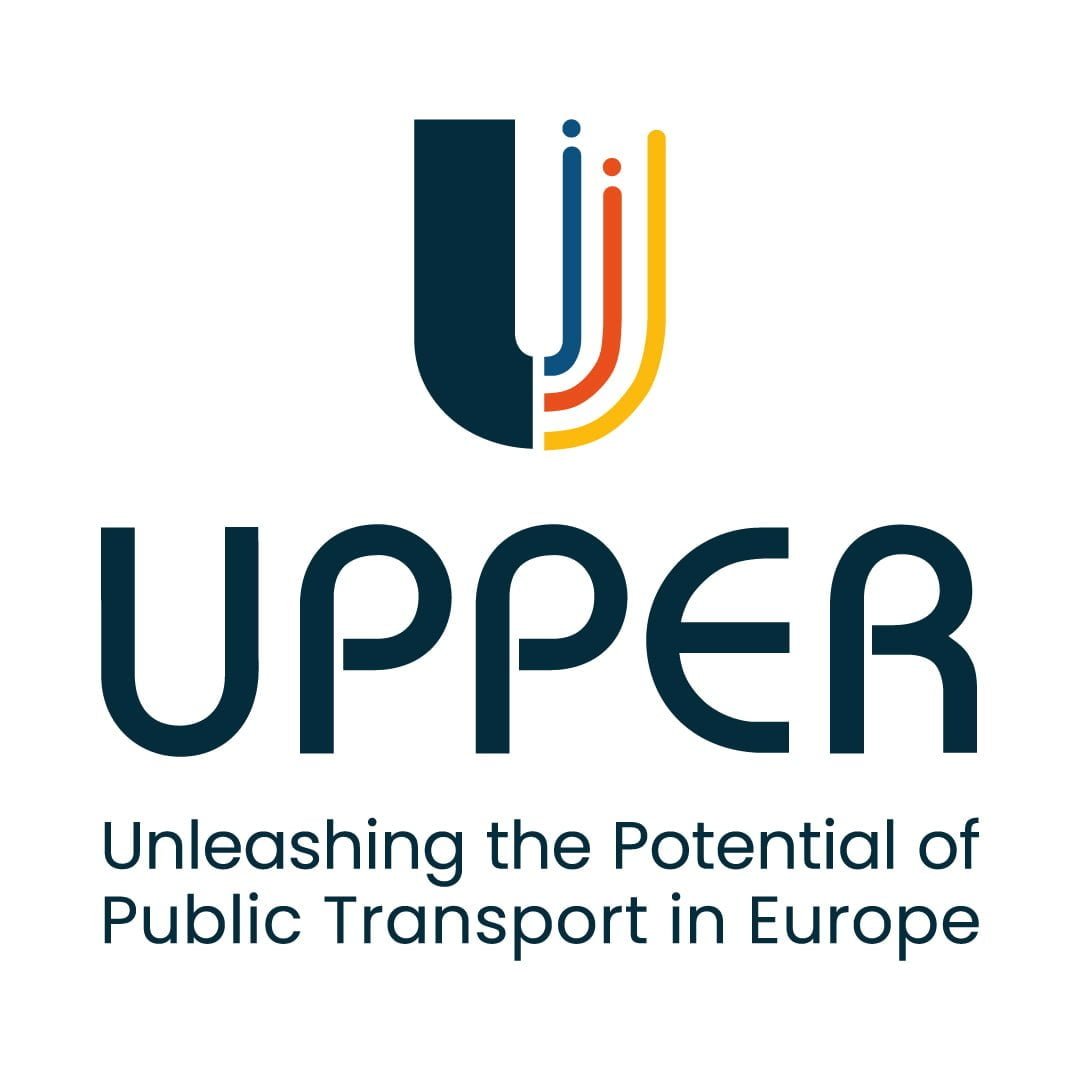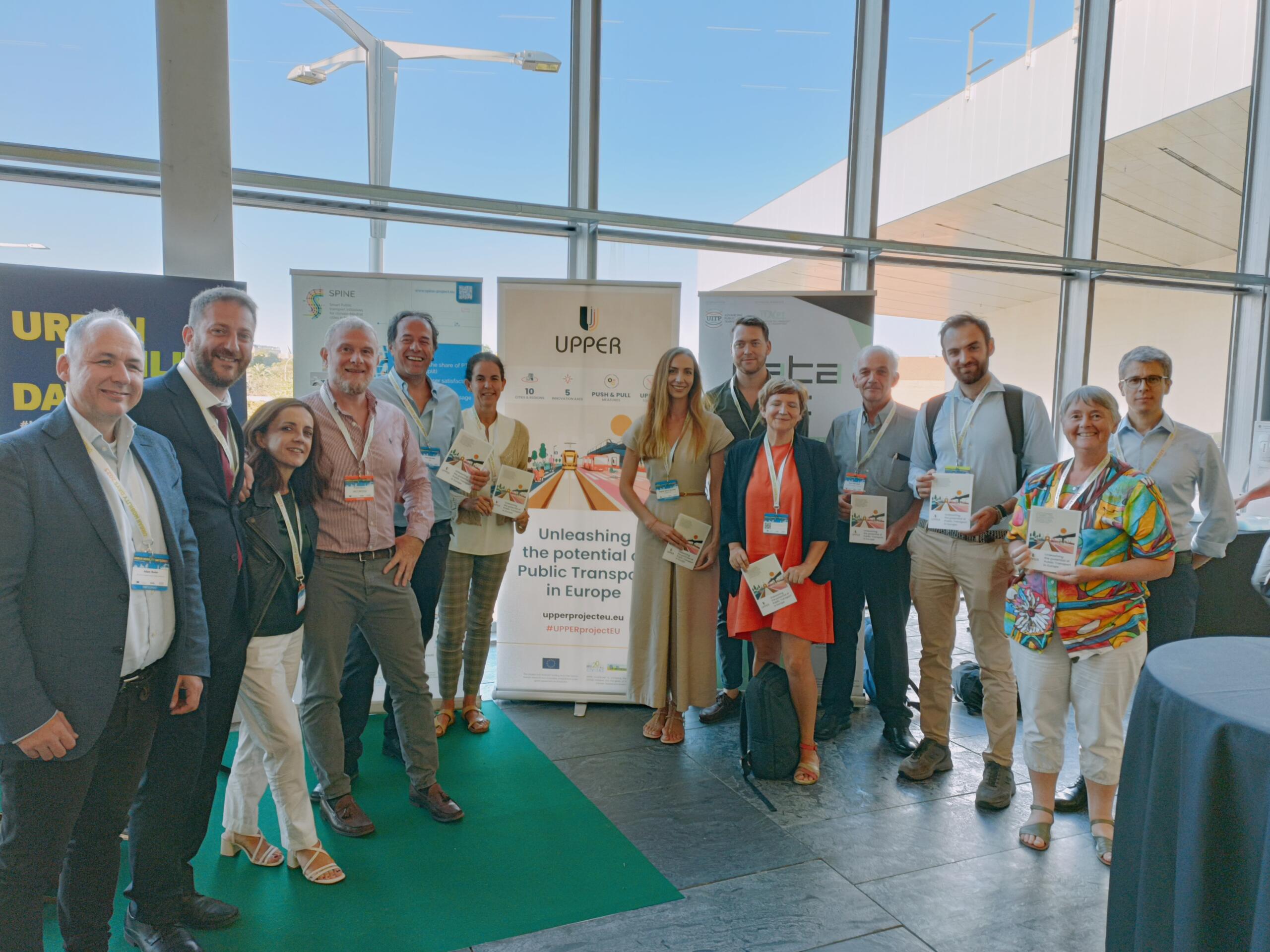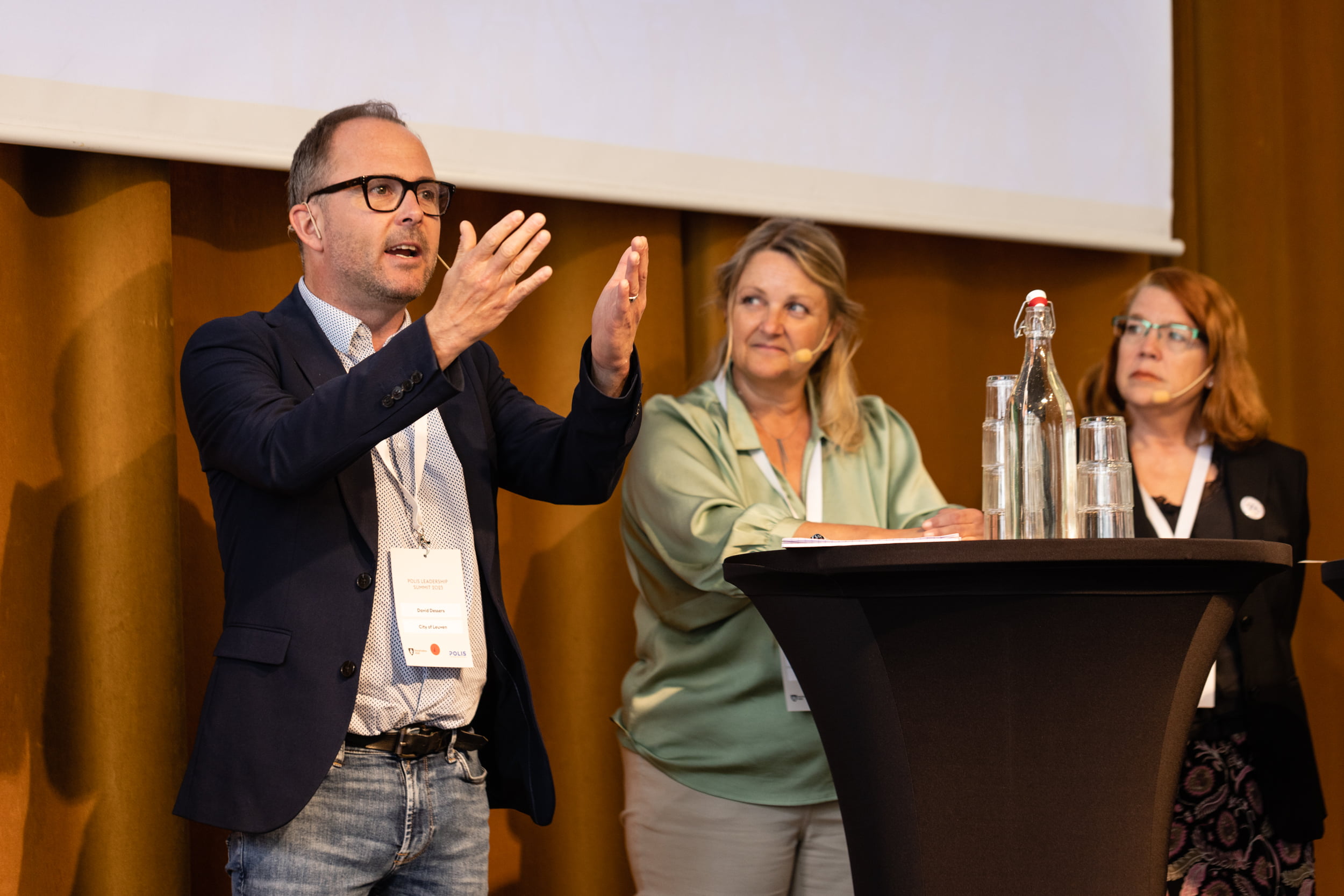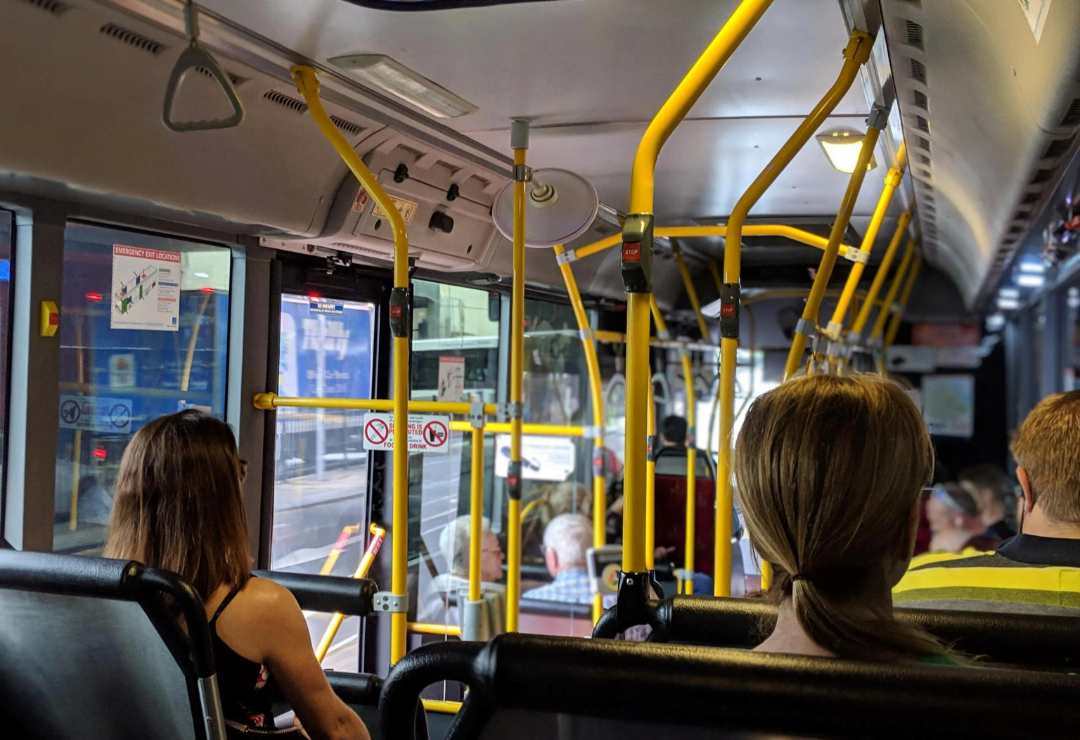UPPER in Action: Unleashing the Power of Public Transport
If cities and regions are to meet climate and modal shift targets, public transport needs to be front and centre; this is exactly what the UPPER project is on a mission to achieve!
To listen to the recording of the article below, please accept all cookies.
While cities have undoubtedly been built around private cars, it is our public transport systems which have shaped the face and popular imagination of the metropolis. From Lisbon’s sunny yellow trams to London’s bright red double-decker bus, indeed, how many of us can identify a city solely from its metro map?
However, it is not just its iconism; public transport is the mainstay of many citizens’ everyday mobility, with 60 billion passenger journeys made by public transport every year. Indeed, while the car may have become associated with personal ‘freedom’, it is public transport which is responsible for providing access to employment, education and healthcare, particularly for women — who account for over 50% of passengers — as well as more vulnerable user groups, for whom the car is an inaccessible and unaffordable alternative.
In addition, public transport serves as a significant source of employment throughout Europe, with a workforce of 2 million individuals employed at the local level alone.
Yet, over the next few years, public transport faces a major — perhaps unprecedented — battle. Services need to be more attractive, extensive and affordable; behind this, additional funding is urgently required, while the workforce faces a major skills shortage.
However, there is much cause for optimism. Innovative changes hold huge promise, with electrification, multimodal ticketing technology, and new public-private partnerships rapidly shifting, making urban public transport not just more affordable, but a quicker, more reliable, and more comfortable choice of transit.
This is where the UPPER project comes in.

The task for cities and regions now is harnessing this potential, and giving public transport the push it needs to accelerate at the speed required. Yet critically, the project anchors action in each city’s unique local mobility milieu — bolstering their capacity to develop solutions which work for them.
After all, what works for Lisbon’s undulating terrain, may not work for Leuven’s flat Flemish fietsroutes!
‘When it comes to collaboration, every city has its perspective. It is therefore essential to consider cities’ unique approaches when coming together to implement the urban mobility framework,’ asserted Tim Asperges, Expert-Advisor Mobility Policy, City of Leuven.
To achieve this, changing mindsets, improving urban mobility planning, enhancing road network management, and supporting democratic governance are critical. Constructed around these core issues, the UPPER project aims to strengthen the role of public transport as the cornerstone of sustainable and innovative mobility. The project will implement a combination of measures looking to push people out of private cars and to pull them closer to public transport in cities across Europe. At the heart of this is ensuring accessibility of services for all citizens, and enhancing the inclusivity of all modes of transit.
‘UPPER strategies originate from a firm belief in Accessibility + Inclusiveness = Freedom. As such, the Mobility as a Right concept is embedded in the core of the UPPER communication strategy,’ says Francesco Iacorossi, Project Coordinator, Eurocities.
‘The representation of all segments of society is extremely important for the execution of UPPER’s vision of public transport as a mode of transport for everyone, ensuring public transport opens up economic, social and political opportunities for citizens, and therefore increasing their quality of life.’
However, accelerating change demands a clear and comprehensive path forward, and urban mobility practitioners and decision-makers need practical assistance in planning and executing action — something UPPER aims to deliver.
Armed with a toolkit which includes a flexible software system for transport planning, travel demand modelling and network data management, data visualisation, engagement and analytics, as well as an extensive knowledge transfer platform — UPPER aims to be a one-stop-shop for all urban mobility case study information and guidance.
But what does this look like on the ground? How are UPPER cities — and regions — going about this? Here is a sneak peek of what the POLIS member cities in the project are doing…
Rome, Italy
The Italian Capital is home to 2,783,809 people, and over the last few years has become a frontrunner in urban mobility planning — particularly when it comes to active travel infrastructure and access regulations.
The Municipality of Rome’s Sustainable Urban Mobility Plan (SUMP) was approved early last year and was followed by the adoption of the SUMP of the Metropolitan Area of Rome in December 2022. Amongst its ambitious goals, it aims to reduce private car ownership, congestion and air pollution, while improving multimodality, use of public transport and safety. A big concern for the municipality is Rome’s high air pollution levels which are beyond the EU’s threshold, including nitrogen dioxide and PM10 levels.
The Local Authority plans to introduce 100 km of new cycle lanes and local 30 km/h zones. This seeks to move beyond the temporary or ‘pop-up’ measures seen following the pandemic towards a ‘transitory’ approach, which embeds the cultural and behavioural change required for long-term modal shifts.
‘Rome is at the centre of a real mobility revolution whose keywords are innovation, sustainability and new infrastructures. We want to be not only the Eternal City but also the city of the future,’ said Eugenio Patanè, Councillor for Mobility, City of Rome, at POLIS’ Political Group meeting in Brussels last year.
Île-de-France, France
Île-de-France — supported by Île-de-France Mobilités, the Paris Region Mobility Authority — has long been on a mission to design projects around the improvement of the public transport system, as well as place it firmly on the international policy agenda.

UPPER Colleagues at Urban Mobility Days 2023 in Seville. Credit: Francesco Iacorossi
Versailles Grand Parc in the region is partnering with UPPER to implement a suite of measures in the locale to underpin public transport use for commuting and tourist travel.
A significant measure is the implementation of mobility credits as a payment method for public transport and micro-mobility services, allowing private companies in Versailles Grand Parc to provide their employees with mobility credits to pay for sustainable mobility modes.
This reflects Île-de-France’s wider approach to a multi-modal, integrated mobility system, which is accelerating its concept of mobility as a service, partnering closely with local micromobility and shared mobility outlets to complement the public transport offer. Behind this is the region’s aim to radically shift passengers’ sentiments surrounding public transport, bridging the gap between perceived and actual quality of service.
Île-de-France is well versed in international cooperation like that provided by UPPER.
‘Despite different types of governance and public transport systems, we share common objectives in terms of mobility, and we all face common issues, which the COVID-19 crisis has well highlighted,’ said Laurent Probst, General Director of Île-de-France Mobilités, when welcoming other mobility leaders at a recent POLIS political group meeting in Paris. ‘The short- and long-term challenges ahead are multiple and must be tackled together, from returning to normal transit ridership (pre-pandemic level) to combating climate change.’
Lisbon, Portugal
From MOVE Lisboa to Mobility Strategy Vision 2030, a pedestrian access plan to tackling safety and security for women travelling across the city, Lisbon is fast making a name for itself for its development of public transport and accessible urban space.
In 2017 cars accounted for 46% of journeys, a figure they hope to cut to 34% by 2030. Lisbon is serious about this target, trialling motor vehicle restrictions in the city centre for 3 months this summer, as well as testing the superblock concept. However, in coordination with these measures, accessible and affordable public transport will be a critical part of achieving this goal. Indeed, Lisbon has already provided free access for children, students up to the age of 23 and seniors over 65 on the metro, public buses, most rail lines and the yellow trams.
Through UPPER the city aims to enhance the quality and efficiency of bus services in Lisbon by addressing perceived quality, effective communication, and system improvement. It focuses on improving the management of perceived quality, coordinating analysis among different operators, bridging the gap between customer and non-user opinions, and attracting new users through better communication and experimentation. The project will also support the city in coordinating traffic restrictions around schools and other facilities to promote safer and more active modes of transport.
Budapest, Hungary
Budapest is not a new kid on the block when it comes to inclusive mobility design. Over the last few years, they have led the way in citizen-centred urbanism, and in the neighbourhood of Törökör, the EU-funded SUNRISE project proved the capacity for delivering results.
Within UPPER, the Hungarian capital is turning its sights to accessible digital services to complement and enhance its transport offering. The city aims to introduce a predictive travel planning option within the BudapestGO journey planner application, to provide a solution for managing a significant source of customer feedback.
‘COVID presented additional and unpredictable challenges for our city. After many years of consistency, we have started to modernise, digitise and make BKK more customer-centric,’ László Fendrik, previous acting CEO of the BKK Centre for Budapest Transport, told POLIS’ Thinking Cities magazine.
With this product, it seeks to also brand and gather data for future Multimodal Mobility Packages in the BudapestGO app. Customers will be able to select discounted services, tickets, and travel products. BKK will collaborate with private transport service providers to test various discount offers, combining public transport fares with sustainable transport options.
Leuven, Belgium
Despite its relatively small size (just 100,000 inhabitants), Leuven punches way above its weight when it comes to sustainable mobility.

David Dessers speaks at the POLIS Leadership Summit in Stockholm. Credit: Angela Zander
Located 30 km from the capital of Brussels, the city is embarking on a journey to become carbon-neutral by 2050, supported by a collaboration between residents, local authorities and the mobility sector.
Indeed, Leuven’s efforts have gained it many awards, including European Capital of Innovation in 2020, the ‘Best Open-Minded Destination in Europe', as well as the 2023 Public Space Award with their pioneering approach to redeveloping the land for active travel and public space.
Through UPPER, the city is building on its new circulation plan, to redesign the public bus system to create high-quality services and improve the transport axes throughout the city to facilitate the creation of separate bus lanes and prioritise traffic signals for public transport.
The city is also striving to embed a range of technological advancements in these changes, including integrated ticketing systems and MaaS applications to test smarter and more accessible incentives for targeted social groups.
Citizen engagement has long been at the heart of Leuven’s approach to mobility planning.
‘For people to connect with our policies, we must go beyond climate change and look at personal issues, as health and accessibility,’ David Dessers, Vice Mayor, Mobility, Climate & Sustainability, City of Leuven, told POLIS Political Group meeting in Brussels last year.
Thessaloniki, Greece
With 315,196 inhabitants, Thessaloniki is the second-largest city in Greece. The Greek city is well accustomed to responding to crisis and is leveraging this expertise through the project to respond to the urgency of climate adaptation.
The city is placing accessibility higher on the agenda. Here, with the support of the UPPER project, Thessaloniki is enhancing public transport in peripheral areas, exploring the potential of on-demand services in low-demand areas.
 Supporting this the city is seeking to implement inclusive multimodal solutions based on already existing multimodal trip planners optimally combining car-sharing, bike-sharing, scooter-sharing and walking. As part of the UPPER project, this trip planner will be improved to address specific user needs and include public transport information.
Supporting this the city is seeking to implement inclusive multimodal solutions based on already existing multimodal trip planners optimally combining car-sharing, bike-sharing, scooter-sharing and walking. As part of the UPPER project, this trip planner will be improved to address specific user needs and include public transport information.
Indeed, public transport in Thessaloniki is only in a few cases combined with other modes especially sustainable ones. This is attributed to the inadequate physical integration of transport modes, but also to the inadequate provision of information about real-time operation. As a result, within UPPER, the city will develop a digital service that will provide real-time information to travellers and integrate this service within an existing MaaS app.
Finally, to address public transport delays and service reliability, Thessaloniki plans measures to implement protected bus lanes, optimise route frequencies, and prioritise buses at traffic signals, thus further encouraging public transport usage over private cars.
Click here to read the article in its original format.
About the author:
Isobel Duxfield previously worked as Communications and Membership Manager at POLIS and led the SMC Platform and Regions Working Group. She completed her MPhil in Gender Studies at the University of Cambridge, where she researched gender and cycling. She managed the SUM4All project and has published academic work on gender, active mobility, and domestic violence prevention.
